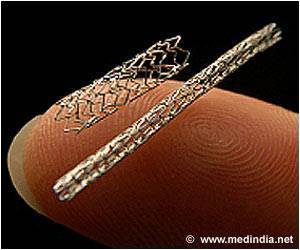New research shows a decrease in coronary artery bypass graft surgery for treating heart patients.

The serial cross-sectional study used time trends of patients undergoing CABG surgery or a PCI procedure between 2001 and 2008 at U.S. hospitals in the Healthcare Cost and Utilization Project's Nationwide Inpatient Sample, which reports inpatient coronary revascularizations, supplemented by Medicare data on outpatient revascularizations. The data come from a balanced sample of approximately 20 percent of U.S. hospitals, which are widely representative of nationwide cardiovascular care.
The data analysis revealed that there was a 15 percent decrease in the annual rate of coronary revascularizations overall between 2001 and 2008. The annual CABG surgery rate dropped by approximately 38 percent in that same time period, but PCI rates did not significantly change. The drop in CABG surgery rates was observed across sex, age, racial, and regional subgroups. The decrease in CABG surgeries occurred as a roughly linear trend throughout the sample time period, suggesting that the decrease was not triggered by any single event, such as the introduction of a particular new technology or a clinical guideline.
Interestingly, the researchers also found that despite the decline in CABG surgery rates between 2001 and 2008, the number of hospitals in the sample providing CABG surgery actually increased by 12 percent, while the number of PCI hospitals increased by 26 percent.
"Our data imply a sizeable shift in cardiovascular clinical practice patterns away from surgical treatment toward percutaneous, catheter-based interventions," said Dr. Groeneveld. "This is concerning given that recent data from a national trial indicated CABG surgery remains the better choice for patients with previously untreated three-vessel or left main coronary artery disease."
The authors note that the NIS does not include detailed information about patient clinical characteristics, such as coronary anatomy, angina class, ejection fraction, medications, surgical risk, or smoking status, which could explain some of the changes over time in utilization of CABG surgery or PCI.
 MEDINDIA
MEDINDIA




 Email
Email










